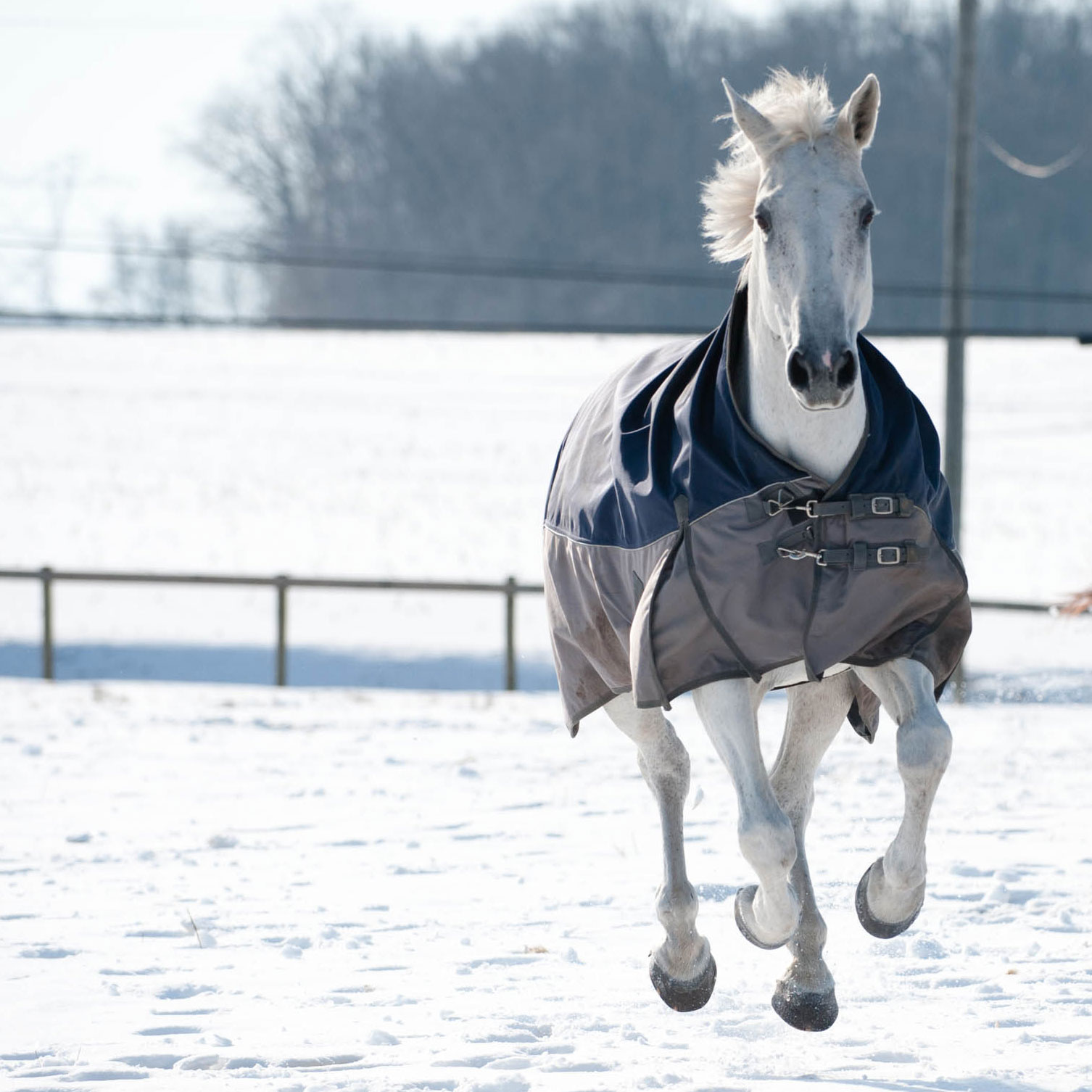Home > Horse Care > Winter footing hacks for horse keepers
Winter footing hacks for horse keepers
- January 5, 2023
- ⎯ Christine Barakat
1. Deep snow is not much trouble for a fit, healthy horse to navigate, but it will be physically tiring. Eventually, horses will trample paths in snowy footing between important locations—hay, water, shelter—and stick to them until the snow melts. Turning the horses out when the snow begins to fall will give them a head start on this process and prevent them from having to wade through deep drifts to reach a needed resource.

2. If you find ice in your turnout area, carefully walk out onto the surface and stomp your feet. If your weight breaks the ice, your horse will be fine on it—his hooves will break right through to firmer ground below. Thick ice, however, can cause a horse to slip and fall. If there is unbreakable ice in your turnout area, consider an alternative space, such as an indoor arena or another pasture that gets more direct sunlight, until it melts.
Click here to learn how to identify and manage slip-and-fall injuries in horses.
3. Muddy fields that are churned up then freeze become a gauntlet of potentially hoof-twisting hazards, especially for older or arthritic horses. If this describes the areas near your gates or waterers, look for an alternative space to put your older horse until the ground thaws. A longer-term solution involves “hardening” the area against mud using gravel or soil-stabilizing geotextiles.
4. If your horse manages to get marooned on a patch of ice, you’ll need to act quickly, but with extreme care. If the horse will remain calm as you work, you can use a pickaxe or shovel to break up the ice to clear a path to safety. Driving a tractor across the surface may also work. If you can’t break the ice, try laying down a thick layer of used bedding to walk the horse over. Lead him with a long longe line, however, so you can keep clear if he slips. If the horse is down on ice, get help immediately. Call your veterinarian and any friends with experience in these situations. You can use ropes to carefully pull the horse to firmer ground.
Don’t miss out! With the free weekly EQUUS newsletter, you’ll get the latest horse health information delivered right to your in basket! If you’re not already receiving the EQUUS newsletter, click here to sign up. It’s *free*!





